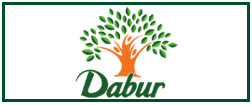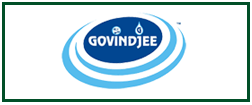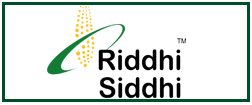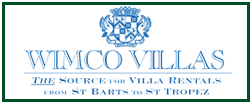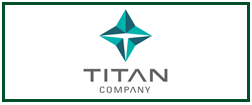|
 |
|
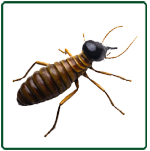 Termites belong to the order Isoptera (Greek meaning "equal wing"). There are about 2,753 termite species in 285 genera worldwide and fewer than 50 species in the USA. Termites belong to the order Isoptera (Greek meaning "equal wing"). There are about 2,753 termite species in 285 genera worldwide and fewer than 50 species in the USA.
Termites are known for their unique capability to utilize any cellulose-based materials, such as wood and paper, and convert them into organic matter. This assists improving soil quality in nature through recycling dead trees or fallen branches and logs. But in human structures, termites' feeding habits place them among the most destructive wood-destroying insects. They are especially prevalent in southern states, where these pests are estimated to cause billions of dollars in damage each year. |
|
Identification |
|
| Winged adults (called alates) have two pairs of equal length wings. They have filiform to moniliform antennae. They are small to large in size. They have a soft body, the waist is not pinched, and they have chewing mouthparts. Worker and soldier termites have very small or no eyes at all, while the winged forms have eyes. |
|
|
Management
|
|
 |
Inspection |
| |
Termite inspection is essential to a successful management plan and requires understanding of the building terms, knowledge of species, habits and life cycle, acquiring special tools and items (i.e., flashlight, screwdriver, coverall, bump hat, gloves, measurement tools, etc.), and knowledge of termite's damage. |
 |
Treatment |
| |
| 1. |
Pre-construction Treatment |
| |
In areas known with constant termite activity, pre-construction treatment is effective and time saving way of managing termites. However, the effectiveness of this treatment may be reduced if not enough volumes of termicide were used or if the treated soil was removed or disturbed by construction activities. The goal of the pre-construction treatment is to cover every inch of ground, creating a chemical barrier that keeps termites from moving from the soil to a structure.
Soil treatment with an approved termicide is usually applied before slabs are poured, floors are fitted, foundations are completed, and substructures are erected. The treatment should be applied to entire soil or gravel fill area under slab, around pipes and utility conduits, along all sides of foundations, piers, and interior partition walls.
To provide continues termite barrier, a treatment of soil adjacent to foundation elements is also important after the footings have been poured and the foundation walls and/or pillars have been built. |
| 2. |
Post-construction Treatment |
| |
Preparation is the key to success. Similar to the inspection, post-construction treatment requires prerequisite knowledge of building construction, termite biology and behaviors, as well as safety application.
| a. |
Treatment along the foundation ("trenching and rodding") |
| |
The objective of trenching and rodding treatments is to create chemical barriers to exclude termites from entering the building. Familiarity with label instructions is a must for success in these treatments, as they provide directions for proper mixing, handling and application practices. For example, the Termidor (a termiticide/insecticide commonly used for termite control in the pest control industry) label says that: "Rodding holes MUST be 12-inches apart. Under some circumstances they can be closer than 12-inches (i.e., clay soil), but the label clearly says that they MUST NOT BE MORE than 12-inches apart. Trenching around the foundation at the rate of 4 gallons finished solution (0.06% or 0.125%) per 10 linear feet per foot of depth, or, if the footing is more than 4 feet below grade, to a depth of 4 feet. Trenches must be a minimum of 6 inches deep or to the bottom of the footing and need not be wider than 6 inches. No treatment below footing should be made".
Sometimes trenching and rodding treatments face a challenge when gaps of untreated soil are present. These gaps will provide perfect reentry points of termites and cause a treatment failure.
Disadvantages of trenching and rodding:Require plenty of gallons of liquid termicide, which may have some environmental impact.Labor intensive and time consuming requiring drilling many holes around the foundation.Need special tools, such as masonry drills, carbide bits, pumps, large capacity tanks, soil rods, sub-slab injectors, foam machines, etc. |
| b. |
Baiting |
| |
There are various termite baits that can be placed in the ground around a structure to attract foraging termites. Due to the trophallaxis behavior, termites share the poison bait with other colony members who will eventually die in a few days.
Advantages of termite baits:Reduce insecticide usage, which reduce environmental impact.Selective toward termites. This reduces its non-target risks. Management can be achieved without ever entering the home.
Disadvantages of termite baits:No guarantee that termites will feed on the bait.More costly than conventional chemical treatment.May require up to a year or longer to achieve satisfactory management. |
| c. |
Borate Treatments |
| |
Products containing boric acid are commercially available as Tim-Bor ® and Bora-Care® for prevention and control of termites. These products are usually applied directly onto unfinished wood surfaces, and will therefore penetrate into the wood to various depths dependent upon the moisture in the wood and the wood specie. When termites feed on treated wood, they stop feeding and then die. These treatments provide long-lasting protection of termites. |
|
| 3. |
Physical Exclusion |
| |
There are various physical exclusion methods as green/non-chemical alternative to chimerical treatments. For example, a study by Su et al. (1991) has indicated that uniform size barrier particles of quartz and coral sand in the 1.18-2.80 mm size range effectively prevented Formosan subterranean termite and the eastern subterranean termite penetration and attacks on a structure. |
|
|
|
|
| |
|


 Termites belong to the order Isoptera (Greek meaning "equal wing"). There are about 2,753 termite species in 285 genera worldwide and fewer than 50 species in the USA.
Termites belong to the order Isoptera (Greek meaning "equal wing"). There are about 2,753 termite species in 285 genera worldwide and fewer than 50 species in the USA. 

